December 2019. “Don’t do it.” Jonas’ pessimistic voice struck me from the other end of the phone. “You don’t understand. I am drawn to her.” I replied, pacing around in the living room of my apartment in San Antonio, TX. ” All the schools you will attend do not have to be named after Mary.” retorted Jonas. “But she is Catholic …” “And private, and expensive ! Be real. You cannot afford her.”
Hanging up the phone, I looked at my new Associate of Arts in Business Administration diploma, just received in the mail. The joy and sense of accomplishment I initially felt now brought me to a place of worry. I did it. I, Fidele Palanga’s youngest daughter, left my family in Togo, West Africa, for America, the land of opportunities. My goal was to get at least a Bachelor’s degree. For that, I had to continue my education at a four-year degree offering university. I wanted St. Mary’s. But per Jonas’ words, St. Mary’s was out of my league. The youngest of three girls, I grew up pampered by my family. They did everything for me. Had I been home, I would have never had to worry about this pesky task – choosing the University I was going to attend.
Grabbing the keys to my car, I began to drive. Catholic universities have an excellent reputation in my country of origin. I did attend an Elementary and High School named respectively Assumption and St. Mary in Sokodé, Togo.
I remembered our uniforms – white shirts with lime green collars and one-inch lime green borders on the front pockets and on the sleeves; khaki pants for boys, and skirts for girls. And not just any type of skirt. Pleated skirts. At least once a week, I had to wash my uniforms and iron my long, pleated skirts, pleat by pleat. If not, my skirts would end up looking like gigantic khaki habanero peppers. Pleatless. The schools’ regulations left no room for comparison, competition, discrimination, or even distraction. They brought unity and equality.
“St. Mary’s is out of your league” …Jonas’ words echoed back in my head as I found myself at an address whose street number hinted at how old the university was.
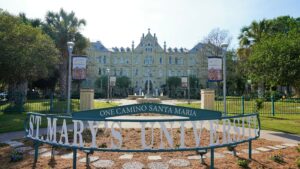
Standing in front of the majestic, ancient school, I reveled in the view. The statue of the patroness, standing on a pillar in the middle of a fountain, beckoned me. I got closer, looked, and saw a woman with arms opened, gaze downwards; a statue whose lack of pristineness appeared to testify that St. Mary’s University was indeed the “oldest Catholic University” in both Texas and in South America. Maria Luisa Cesar, San Antonio Express News’ staff writer mentioned that in her February 7/8 2015’s article: “St. Mary’s an old hand at education”.1
An odd feeling of peace coming over me, I began to walk, taking in the imposing, and intimidating buildings, and was taken suddenly to the year 1852. When it all started. Or did it start on April 8, 1761, in Perigueux, France? Blessed Chaminade, founder of the Society of Mary, was born.
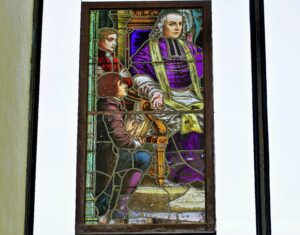
Growing up, he learned filial devotion to Mary from his mother. He studied Theology, Philosophy, to become a teacher of Mathematics and Physics and also a treasurer at Saint Charles’ school of Mussidan, France.2
Together with his two brothers that were also priests, Jean Baptiste, Superior in charge of teachers’ formation; and Louis, Director of studies, he created a teaching style that made the school’s environment so unique and stimulating, that people were naturally drawn to it. “They knew how to give the school an extraordinary educational quality”, people said.3
Well, St. Mary’s evoked in me the same feeling. Anyone I informed of my dream to attend St. Mary’s said things like : “That is a top-notch school”; and, “Can you handle it? St. Mary’s University is one if not the best school in San Antonio.”
Of course, I could handle it! I was Catholic. How could I not handle a school named after Mary? After all, I had a somewhat decent relationship with the mother of my Lord, the King whose eyes were like flames of fire! In fact, at the Nativity scene displayed by a three-stories building, the Commons, using my spiritual phone, I dialed St. Mary’s number and prayed like this: “Hello mother! If I am to attend this school, pray with me. Like you told him at the wedding feast at Cana that wine was lacking, prompting him to perform his first miracle, please, tell him I lack money to pay for tuition at St. Mary’s. As a Veteran, my benefits will not cover full tuition. I am too broke to take out a loan to bridge the financial gap. I need money.” Well, that was more a monologue than a prayer. The bottom line was that I prayed. So, Yes. I could handle St. Mary’s University, if given a chance.
From buildings that were centuries older than me, to the beautiful Nativity scene that filled me with nostalgia, my meanderings throughout the campus led me to the University center, where a young man redirected me to a building named after the founder of the Society of Mary.
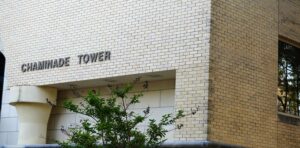
Someone opened the door. A professor exiting the building. An old professor. Well, his hair was all grey. Let me rephrase: A grey-haired Professor exited the building.
Chaminade tower. First floor. Office of Admission…Front desk.
Me: “Is there anyone I can talk to, to get information on St. Mary’s enrollment process, programs and majors?” Talk about customer service! Instantly, a phone call was made, and I was given a bottle of water. I made myself at home, sitting on the couch and reviewing a few magazines. This felt good. Like I was home. Like I was at a school owned by my mother. It was more than an excellent customer service, that I received from the ladies. There was something about them – the lady at the front desk, and the one in the office, loading my brain with the information I requested; that made me feel like I was the daughter of a King. I did not know, whether it was their smiles, their loving gazes, or their indifference towards my English spoken with a thick African Accent. Compared to other schools I visited, here, I felt respected. Loved. Known. I belonged here.
The same indifference of the ladies in the Office of Admission toward my thick African accent – or a worse one -, animated the 3,168 people living in San Antonio 173 years ago regarding religion. An era of wagon trains pulled by horses, mules and oxen. An era of unpaved roads, dusty in the heat and very, unattractively muddy when it rained.4 In a climate of religious indifference and idleness; at a time of economic, educational, political and spiritual decay, Bishop Odin, of French origins, in the years 1850, made efforts to reignite the flame of faith in the San Antonian community he was appointed to serve. Going back to France, his home, he looked for teachers. He needed them for the school he had planned to build in San Antonio.
“Check out the order called the Society of Mary” he was told in French. “Also called Marianists, or Sodality of Mary…it is a teaching order whose members devote their lives to teaching. Excellent in the art of teaching and running schools, they run schools in various countries!” At his insisting request for teachers, Brothers John Baptiste Laignoux, Xavier Mauclerc, Nicholas Koenig and Andrew Edel (at the time a Dayton Ohio’s St. Mary’s Institute) were sent. From France, they came, bringing with them unique features and educational styles of the Society of Mary. And so was born St. Mary’s Institute, in 1852.5
From 12 pupils, it grew to become in 2023, the #3 University in the West for Best Value, #1 for Social Mobility, #1 for Veterans; over 3,500 students from all faiths and backgrounds; and a statewide, nationwide, and Catholic-wise College of Distinction.6 Inclusive much? Talk about diversity. Talk about a harmonious melting pot of peoples and cultures!
My confused self stared, in disbelief, at my bedroom’s carpeted floor I was now level with. The previous, day, If my memory served me right, I fell asleep on a fully inflated $55.00 air bed. How was it, then that I awoke on the floor? Air leak. Being unable to afford a real bed was a sad thing. But I was going to change that. Education was the way I would do it. Education would expose me to better job and salary opportunities. While I placed a tape over the hole in my air bed, in the country, there was chaos.
Death, robed in disease caused by Coronavirus moved mercilessly through nations, assaulting living souls, sowing confusion and despair, wielding fear and dark forces that brought the whole world to its knees.
“As a result of confirmed cases of 2019 Novel Coronavirus (2019-nCoV), on this date and after consultation with public health officials as necessary, I, Alex M. Azar II, Secretary of Health and Human Services, pursuant to the authority vested in me under section 319 of the Public Health Service Act, do hereby determine that a public health emergency exists and has existed since January 27, 2020, nationwide.” The statement from the Secretary of Health and Human Services read.7
Schools closed. “Nonessential” workplaces closed. Churches closed. Separation! “Isolate from one another, to remain safe.” Isolation. It was a state very familiar to me. Since childhood, it has been a coping mechanism for feelings of not-belonging and being different.
1789, France. There was chaos in the streets. The French Revolution.
It was July, the fateful date of July 14. On the eastside of Paris, stood a fortress. The Bastille, intimidating from its 100 feet height, and the 80 feet wide ditch surrounding it, was as old as the middle ages. The fortified stronghold, built to resist attack, was invaded by an armed mob of Parisians. Sounds of gunshots echoed through the prison fort as the mob, armed with knives and pipes, attacked. Civil unrest and violence spread through the country, bringing with it enactments of laws and decrees that painted for the Church in France, an ominous future.8
Law. An ensemble of rules enacted to order societal behaviors. A system of regulation specific to a country, a group, or an area of activity.9 Laws existed to protect general safety, to ensure citizens’ rights against abuses. As President Theodore Roosevelt said regarding America, “Ours is a government of liberty, by, through and under the law. No man is above it, and no man is below it.“10
Laws are necessary for the good function of society. Or should I say, “Just Laws” are. The fair character of a law is not found in its codification by courts, governments, or judicial systems, or even individuals. If they were, laws of the Third Reich, that “legalized” Hitler’s horrendous acts would be just. Slavery-promoting laws would be just. Jim-Crow Laws would also be just. “Legal” is not synonymous of “Just”.
Martin Luther King in his 1963’s Letter from Birmingham Jail, differentiates Just Laws from Unjust Laws. He states: “A just law is a man-made code that squares with the moral law, or the law of God. An unjust law is a code that is out of harmony with the moral law. To put it in the terms of St. Thomas Aquinas, an unjust law is a human law that is not rooted in eternal and natural law. Any law that uplifts human personality is just. Any law that degrades human personality is unjust.“11 In other words, the source and authority of law transcend humans. Just Laws are in tune with divine principles, rooted in equality, and guided by moral principles, or Ethics. They promote the common good of society. Unjust laws do the opposite.
The United States Courts’ Rule of Law overview webpage states, in that line of thought, that the Rule of Law has principles that are Publicly promulgated, Equally enforced, Independently adjudicated, and Consistent with International human rights principles.12
In the light of those definitions, Laws enacted during the French Revolution were unjust, because they bred violence and vested death with the authority to war against the people and the Church, giving it license to persecute those who refused to comply. These laws and constitutions, in an on and off format, for ten years, robbed people of the freedom to worship, and the religious of the freedom to profess their vows publicly and to minister. The State took over religious institutions including schools, and subjected the clergy to an oath of allegiance, not to the Holy See, the episcopal jurisdiction, or government of the Catholic Church in Rome, but to civil authorities, placing the Church of France at odds with the Holy See, making it a schismatic Church, separated, isolated from Rome. Divided. We now had a “rebellious church”, faithful to Rome, constituted of religious who refused to take the oath and were ready to bear consequences that ensued, namely, the loss of all means of subsistence and of rights to minister; and a “constitutional Church”, comprised of those, faithful to the State who took the oath.13
Father Chaminade, during the ten years course of the 1789 French Revolution and unjust laws that came with it, resisted the oath, then left Mussidan for Bordeaux when he lost the school to the State. In Bordeaux, while he hid, he carried on a full, clandestine priestly ministry, disguising himself in various ways. As far as anyone knew, his parents were the “only” and “true” owners and residents at Saint- Laurent, the farm he had purchased along with the vineyard, Haut-Brion Saint Laurent. The villa at the farm had multiple hiding spots, trap doors and warning systems…from a dog trained to bark differently at the approach of strangers, to a talkative servant delaying said strangers, to allow Father Chaminade to hide.
Christianity, with its morals and ideals, was successfully wiped out of France’ surface and was replaced by a new State religion: the Cult of The Supreme Being. But underground? Private houses and plumbers’ shops, became chapels where clandestine Mass (church) was held. Ministry from saying Mass, hearing confessions, to blessing marriages, and performing priestly duties, continued. Under various creative disguises, sometimes as a tinker, other times as a peddler of needles Father Chaminade maintained an active ministry. Many times exposed to the danger of being discovered, he, sometimes, spoke to the soldiers seeking him to arrest him, without them recognizing him.
Indeed, Christianity on the surface, was wiped out and replaced. “The Cult of the Supreme Being” the new State religion, replaced Roman Catholicism. The new youth was growing up indoctrinated on ideologies of the Revolution. Wiping out Christianity plunged France in darkness. Replacing it with irreligiosity painted a worrisome future. In Father Chaminade’s heart, and that of many underground clergy and lay people, Christian ideals were alive and well. They had to be kept alive. Father Joseph Chaminade devoted his life to that noble task.14
While he did that, I devoted my evening to drinking wine. Not the whole bottle, just a glass. Why? Because, Father Joseph Chaminade owned a winery. Cheers to one thing I could now say he and I had in common: wine. Well, he owned a winery. I drank wine. That was close enough.
Dismissing my cousin Jonas’ pessimistic advice, I applied at St. Mary’s and got accepted! My tuition was partially covered by military benefits, and completed by St. Mary’s Yellow Ribbon Program. My prayer was answered. I did not have to take out a loan to complete tuition. However, with everything “non-essential” being mandated to close, face-to-face interactions being “cancelled”, and St. Mary’s educational style being in-Person, I wondered if my first year at St. Mary’s would also be cancelled.
Father Chaminade, during the French 1789 Revolution and unjust laws that came with it, defended the School of Saint Charles, where he taught, while discreetly looking for a remedy. When he lost the school, he hid and continued his priestly ministry. If he founded the Society of Mary, which birthed St. Mary’s University, I wondered what the University would do in the face of Covid-19. The response came on St. Mary’s emergency updates webpage. The University went into hiding. She paused in-person classes for everyone’ safety, and continued ministry behind cameras. St. Mary’s University moved to an Online educational style.15
Overjoyed by the news, I performed a quick turkey dance, and thanked Providence for creating possibilities.
From the reign of chaos at creation the Spirit hovered. Through the Word spoken by God, order and beauty emerged out of the chaos. From the chaos of the French Revolution, the Spirit surely hovered. The Society of Mary rose from the ashes. From the chaos orchestrated by Covid 19, signs were there, that something beautiful was brewing. Comfortable in my isolation, I began my online journey at St. Mary’s University.
Zaragoza.
I blinked twice, looking at the “Zaragoza” Orientation course that popped up on my Canvas learning management system account. I chuckled, amused by the word. “What to expect from your “Zaragoza” experience” … I read, wondering what “Zaragoza” meant. “So, I had to take the online “Zaragoza”- chuckle – experience, and then another one, in person, on campus, August 6-7.
Skimming through the course, I landed on a PDF document titled “Interpretation of the Logo of St. Mary’s.pdf”. It read: “The essence of the University – its Catholic nature – is portrayed by the cross” … nothing new here…skim…skim…skim “Creating an appropriately Hispanic motif-reflecting the decades of service that St. Mary’s has committed to the people of San Antonio and the Southwest – …” again, nothing new. Who in Texas did not know that St. Mary’s University was a Hispanic-serving Institution?
I was tempted to stop reading at that point, but knowing there would be a quiz at the end of the course, I continued “… the cross is also reminiscent of the design of a medieval cathedral in Saragossa, Spain, where, according to tradition, William Joseph Chaminade first witnessed his inspiration to found the Society of Mary…”16
My eyes lit up.
Zaragoza. Saragossa, Spain.
I leaned back on my chair. For your information, I had upgraded my living room furniture. In addition to the recliner and the hammock, I now owned a study table, four chairs, and a 22” TV that I fastened and glued to its table. Why? If someone were to steal the television, they would have to take the table with it. Having been robbed before, this was my way of securing my belongings, and discourage thieves. This was me making the sin of theft as painful as possible to thieves. I glued my new 22” TV to its $30.00 table stand, and fastened it with four screws. If it was possible, I would have even cemented the TV table to the floor. You see, TV was an important way for me to stay connected to the world and to gain access to political and economic changes. In Father Chaminade’s time, communication was face to face or in print (if you were lucky). Statues and religious spaces provided reflection and gathering opportunities that I can often get online.
Where was I? Ah, the chair.
I leaned back on my chair and took a generous sip of my favorite red wine, straight from the bottle.
Two parties sought to rule France – Jacobins and Girondists; the latter, moderate federalists, and the former, centralists, extreme radicals. Bordeaux up till then, because of the moderate nature of Girondists’ style of rulership, bred no open persecution for clergy who refused the oath, allowing many of them, like Father Joseph Chaminade to open small chapels for private worship.
Led by prudence, he moved his parents there, soon enough for Jacobins’ 1792 riot. Taking over rulership over France, led by their radical extremism, Jacobins enacted a national law geared to expel “rebel priests” (priests that refused to take the oath) from France, their country. Ensued a proclamation of a new republic of France, a judgement and condemnation of King Louis XVI to death by guillotine. An infernal desire infested the whole city. Darkness entered hearts, poisoning them with the maleficent inspiration to wipe out the “rebellious church”. An anti-Christ spirit rose, hell-bent on de-Christianizing France, calling forth persecution laws. Denouncing “rebel priests” was rewarded. Protecting them warranted execution by guillotine. Owning religious items was also sentenced to death by guillotine.17
With almost everyone migrating to Bordeaux for safety, the city soon became unsafe. During the Reign of Terror, 1793-1794, Governmental representatives took over. Girondists were killed in Jacobins’ plan to eradicate federalism from Bordeaux. Violence and dictatorship ruled. A guillotine was placed at the Place de la Nation, the center of the city, and the pit dug at its foot to receive blood from its victims, teemed with blood…the blood of the victims. Victims were fighters for justice and those who resisted injustice, but mainly, priests, rebels or not. Dragged in the streets and beheaded they were. Martyred. A priest’s’ head -Father Langoirian – , after being cut off, was paraded throughout the streets on a spike in a full display of morbidity. The terror was dreadful.18
A short break came when the authors of persecutions were defeated, and a decree favorizing Freedom of Worship was enacted February 21st, 1796. But after a year and some change, persecution laws against “rebel” priests were reinstated, awakening once more violence and cruelty. This time, the rebel clergy was deported to the French islands of Oleron and Guiana, for “disrupting public order”.19
Another break came with Conservatives’ 1797 election victory, which led to the decree of August 24 that put an end to persecution and allowed banished priests to return home. But Jacobins would not relent. Rebelling again, they disregarded election results and “cancelled” it.
With the rollercoaster of persecution-peace reaching its peak in late 1797, Father Chaminade this time, could not hide. Priests that had re-entered the country were once more mandated to leave. Father Chaminade, who had just reopened his chapel for ministry, was given a passport and mandated to leave the country. The 36 years-old priest did not panic. He was neither troubled, nor did he despair. In fact, he even said this in a letter to one of his spiritual daughters: “…what is the faithful soul to do amidst all this chaos which threatens to engulf it? Only this, to rely absolutely and imperturbably on God, and to adore His eternal designs which will ever turn out for the best of those who love Him.“20
I guess it was this absolute reliance on God which moved St. Mary’s University to resume in-person classes. So soon. All precautions were taken, of course, to ensure a safe return to campus. But someone was not happy about that decision. Someone was comfortable with online classes. Someone did not want to mingle with other students, and was going to miss attending school from the convenience of a smartphone. What a shame. I was “someone.”
Going to work. Pausing work to drive 36 minutes to attend a 50 minutes class, and driving 1 hour back to work – because of traffic – to finish work, three times a week, was my new routine. That was crazy. “You’re crazy”, one of my coworkers told me, after hearing me complain. “Blame St. Mary’s University.”, I said. “They are extra.” “No, YOU’RE crazy, for doing both school and work, full-time!” Pausing, I thought about it for a minute, slowly coming to the realization that I was the crazy one. Well, in my defense, I attended a school whose founder, in response to unjust laws suppressing Freedom of worship, disguised himself as a tinker to continue his priestly ministry incognito. I knew what I wanted, and was going to get it. If unjust laws did not stop Father Chaminade, nothing could stop me. Covid 19 did not. Traffic, and its related setbacks would not either.
Zaragoza, capital of Aragon, City in Spain.
Aragon, City of Our Lady of the Pillar, Patroness of Aragon, of Zaragoza, and of all Hispanic People.
At St. Mary’s, I had to take an internship course to prepare me for professional life. Who knew, that helping his brother make statues of saints in plaster at Zaragoza would be a form of “internship” that would train the priest Joseph Chaminade in the art of making living saints? Did I mention that he was mandated to leave France? Well, he was exiled at Zaragoza, the capital of Aragon, a city in Spain. Zaragoza became the spiritual bootcamp where Father Chaminade trained for mission. There, he studied Theology, Church History and the Holy scriptures. He expanded his view, forming himself in faith by visiting convents of various religious orders. Benedictines. Dominicans. Franciscans. Carmelites. Augustinians. Fathers of the Pious Schools. Hermits of St. Jerome. Trinitarians. Contemplatives. Trappists. Father Chaminade studied their practices and their spirit.
The chapel of Our lady of the Pillar stood tall, majestic and ancient, bordering Spain’s longest river: the Ebro. I could hear the calming, relaxing sound of the river, slowly flowing into the Mediterranean Sea. I wondered, if there were fish in that river.
Sent by Christ to preach the Gospel to the ends of the earth, James, son of Zebedee, Apostle of Jesus, and brother of John, found himself in Spain, well at the time, it was called Caesaraugusta. It was AD 40, seven years after Christ’s death. After his resurrection, he appeared to them, fellowshipped with them for some time, and ascended to heaven.21 Mary, Jesus’ mother, in care of John per Jesus’ will, was still alive, in Jerusalem, while James arrived in this place called Caesaraugusta (Roman name of the time), Saraqustah in Arab. Zaragoza. 22
James preached his heart out, walking about the city. But the Good News he brought was refused. His apostolic heart wounded by the rejection, disappointed, he gazed at the Ebro river which flowed across Aragon, silent witness of his discouragement. Tired, he bent down and sat on the bank, debating whether to give up or not to give up. “Be encouraged.” He heard. A sweet, motherly voice. He recognized that voice, how could he not recognize the voice of Mary, Jesus’ mother? The telephone had not been invented at that time yet, so her voice could not come from a phone call. Did she follow him at Caesaraugusta?!!! Looking around, searching for her, he heard again: “The people of this land will become Christians, with a faith as tough and secure as this pillar I am standing on.” James blinked, wiping his eyes, to make sure he was seeing properly. The mother of his Lord was before him, standing tall, reassuring, atop a pillar made of stone. Last time he checked, she was in Jerusalem. Talk about being in two locations at the same time and not with the help of technology! What a mysterious woman! What a mysterious occurrence that must not be forgotten! A sanctuary was built around the pillar in remembrance of those events related by tradition, while James went on, converting souls of early Spain. A statue was also carved, and placed in the sanctuary, the Santa Gapilla, to commemorate the apparition.23
Before that statue, in the overwhelming presence of her who inspired it, Father Joseph Chaminade, spent long hours of prayers and received showers of graces. He underwent sanctification. His body, mind, spirit and soul experienced purification, refining and transformation. There, he detached from things of the earth. There, his faith increased, his confidence in God and in Mary strengthened, the degrees of his humility, love and charity soared, and with the new understanding that being a Christian was synonymous to being an apostle, his vocation was confirmed and its apostolic character received shape.24
His vocation was confirmed.
What on earth was my vocation? What was I going to do with my life after graduation?!! This confidence I communicated in my demeanor was all make-believe. I looked as if I had it all figured out, but deep down, I was afraid. I was drawn to Investigative Journalism, though narrowminded when it came to the field in which to work. I was also afraid of the dangers surrounding that field. Threats. Arrests. Sometimes, imprisonment, and torture. Where could I find balance?
Vocation. “Vocation comes from the Latin word vocare, which means to call.” I was in the class of one of my Professors. The “group-work professor”, I nicknamed her, because of her love of group assignments, forcing me to work with other classmates on assignments and on community projects in a “family spirit”. In fact, many St. Mary’s teachers had similar tendencies…making us get out of our comfort zones and better the community. What was up with that? Apparently, St. Mary’s did not know that I was a lone wolverine – who, in isolation thrived and produced better results. I knew it all, could do it all, by myself and for myself, and had no time to be wasted on relationships.
“Vocation is a calling, which necessarily implies that Someone is calling.” Father Brandon Paluch’s voice continued. My group-work professor had invited him to talk to the class that day about something in the line of career development. “…so, we can have a perspective that’s like, what I’m doing with my gifts, my talents, my efforts, my work…is part of something much greater…The future is indeed ambiguous, right? Sometimes our world is like a stormy sea, you know…there is a lot that’s uncertain, and a lot that can make us afraid…So how do we face that uncertain future? I don’t wanna say it’s all dark, but it’s certainly uncertain. How can we face that with confidence?”
He was calm. Intriguingly calm. And humble. A humility that resisted the pride and pretension in me. Gentle and composed, he spoke calmly, while his eyes smiled. He was reading my mind, was he not? How was he doing that- naming my fears and worries and appeasing the tumult in my heart, that I worked so hard to conceal? My soon-to graduate self, unlike Father Chaminade, who, at Zaragoza, received through a supernatural, interior light, clarity in vision of his future and mission, when it came to my vocation, was both confused and afraid.
Father Brandon continued.
“Because Someone is calling, we can be sure of ourselves and we can be sure of our future because we are already being held in hands that are greater and more gently than our own” … “If God calls you for something, you will also receive the grace for whatever it is. So, if there is a challenge, there’s also going to be the grace to meet that challenge…” … “So how do we face an uncertain future with confidence? … Someone is calling and is with you on the way…”
Father Chaminade had his calling since age 14. Graces he received at Zaragoza energized him to fulfill the mission of re-Christianizing France, in total surrender to God’s will. He tackled his mission, calm and undeterred before setbacks. He was confident in the God that called him. I could see Father Chaminade’s calm in Father Brandon, a contagious calm that wrestled with and overcame my restless heart.
Thus, armed for mission, Father Joseph Chaminade after three years of exile returned to Bordeaux to a France successfully de-Christianized. And so, with a new century came a new life. The Sodality of Mary, in 1817. Re-Christianizing France could not be done alone. In the steps of the first Christians who gathered in the upper room with Mary in their midst breaking bread, praying and serving the community, Father Chaminade gathered and built a faith-community devoted to prayer, education and service to the larger community. He gathered crowds from different social, religious, intellectual backgrounds. Men and women, children, and adults, priests and lay people, educated and unlearned, wealthy and poor, intellectual and manual laborer, all following the lead of Mary, model and first apostle, Jesus’ Mother, a woman of great faith, love, and charity.
Talk about diversity. Talk about inclusivity. Talk about equality.
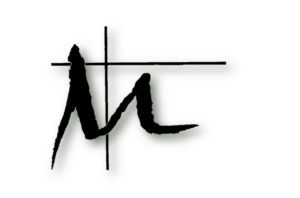
Sons of Mary within a confraternity that bore her imprint and were led by her spirit. The spirit of She, who consented to receive the Creator of the Universe in her body, giving flesh to the One who was Spirit, bringing him forth and giving him to the world. The spirit of She who believed that the words spoken her by the Lord would be fulfilled. The spirit of She who was open to the Ruah Elohim – the Spirit that, at creation, hovered over the surface of the waters, bringing order from chaos – the Spirit of the Lord. In her the Word took flesh, by the Spirit, and after bringing him forth, she gave him to the world.25
In her, selflessness was magnified. Because why else, would she, while being with child, walk miles to assist Elizabeth, her old cousin? Why else would she intercede for her Son to do something, when at a wedding feast, they ran out of wine?
Hers was motherly role that did not end with her Son, but continued with his disciples and with his Church: to form Jesus in us in partnership with the Holy Spirit, causing us all to resemble Him. Influenced by her, one could, under the leading of the Holy Spirit, become like Jesus…Imagine that. A society filled with people like Jesus. People of selfless love and care for others. This love, genuine and true, was what I experienced when I walked in the Chaminade tower, in search for information. What a wonderful thing it would be to reflect around us, Mary’s warmth of welcome, not only to God, but also to others!26
Like her statue at the entrance of the University, where, towering above the fountain, arms opened, she has her back to the University. Why would she turn her back on the University that bore her name? Walk outside the university, and look in. What do you see?
A mother with arms wide-opened, welcoming you to an institution overshadowed by the Spirit.
Mothers evoke families. Family is a place where children are born, educated, nourished, guided, taught. Family is where one feels at home and at peace. Family is where one is known, accepted, and loved. Family is where one is formed for communal life.
Family, the cornerstone of society. God is family. His church is family. Schools identifying with His Church and with Him bear that family spirit which, far from alienating or discriminating others, accepted them, loved them, was inclusive, and treated them with equality and dignity because “all men are created equal, that they are endowed by their Creator with certain unalienable Rights, that among these are Life, Liberty and the pursuit of Happiness”.27
With Christ raised in us by Mary, we are called on a mission to, not keep these treasures of faith to ourselves, but to share them with the world.
And St. Mary’s, a Catholic University by the virtue of her identity rooted in Ethics and principles in tune with the Apostolic Constitution of the Supreme Pontiff John Paul II on Catholic Universities, fostered a free search for whole truth about nature, man and God, with a knowledge of Him who is its fount. She is a community working to protect and to advance human dignity and a cultural heritage by the means of services such as research and teaching local, national and international communities.
While being a Christian presence, St. Mary’s deals with societal and cultural issues of the time, drawing inspiration from Christ, shining the light of the Catholic Faith on reflections and research pertaining to human knowledge while remaining faithful to the Christian message received through the Church, and while being committed to service to God’s people and to human families. Committed to truth, her vocation was to educate not just in religious matters, but also in intellectual and professional ones.28
I looked at myself in the mirror, and smiled, not recognizing who I had become. It was graduation day. I was to receive that day, my Bachelors of Arts in Communication Studies, Summa Cum Laude. Whatever that meant.
St. Mary’s University was a catholic university, not just because she said so, or because there was a chapel on campus, but because she had a Catholic Foundation, Catholic Ethics. She embraced Catholic Social Teachings and was led by Catholic Moral Theology, which are all in tune with Eternal Law.
Spreading the faith does not equate to suppressing cultures, or deeming some cultures inferior because they have different beliefs, or are different. Father Chaminade worked within the governing laws of his time to maintain and preserve the faith. And, like Father Brandon once told me when I went to him to seek spiritual guidance, “faith does not belong to one culture, but can be lived and expressed in ways proper to every culture.” We are all different, but equal, because created in the image and likeness of God. Equality.
St. Mary’s is a Marianist University in the light of her identity rooted in a relationship with Mary, and in charisms related to her – Faith, Charity, Community – a family spirit. St. Mary’s University lived her Catholic identity with a Marianist touch, approach or style.
With a family spirit, in Father Brandon’s words, “learn the faith, live the faith and go out to share it with the world. In the spirit of charity, build communities and help repair wounds in society.” Father Brandon Paluch, Marianist Priest.
It all now made sense. The class subjects, required courses, discipline, rigor, group assignments, challenges. Who I was, and who I had become was the story of a transformation, designed by the one who called me, and was with me on the way. Walls of isolation, rebellion, mediocrity, impatience, entitlement, conceit, self-sufficiency, pride, arrogance, intolerance, selfishness, narrow-mindedness, judgement, self-righteousness, lack of charity in me totally collapsed, and I beheld the new me. A “me” that was formed in my faith, a leader for the common good of society; a “me”, an educated professional; a “me”, formed in academic excellence. I beheld the integrally educated individual I had become, the new me now led by the family spirit, the spirit of charity, service and justice; the spirit of community that trained me to adapt to change.
Formed in the Spirit of Mary, I walked the stage and received my diploma, equipped to love and serve the community.
St. Mary’s University was and is my Zaragoza.
Should you be inspired to learn more about Father Chaminade and his ministry within the Marianist tradition, check these out:
29. https://marianist.org/PDFs/resources/Rule%20of%20Life%20-%20Eng.pdf
The Marianists – Life in Community, 2015, https://www.youtube.com/watch?v=tKM7N-jUqt0.
Resch, Peter A. Very Reverend. Father Chaminade : Founder of Schools / Very Rev. Peter A. Resch, S.M. Marianist Publications, 1955. https://discovery-ebsco-com.blume.stmarytx.edu/linkprocessor/plink?id=d7aa0eaa-f192-31ec-8862-d38562ef1369.
Verrier, Joseph. The Sodality of Father Chaminade / Joseph Verrier ; Translation by Robert E. Brown. Marianist Resources Commission, 1981. https://discovery-ebsco-com.blume.stmarytx.edu/linkprocessor/plink?id=e5a03236-1bb3-3318-8220-f718978dbe1c.
Clemens, Bertrand E. The System of Virtues of Father Chaminade / [by] Bertrand E. Clemens, S.M. Institute of Marianist Studies, 1960. https://discovery-ebsco-com.blume.stmarytx.edu/linkprocessor/plink?id=89330ee6-4a61-37af-a721-bf893360eb76.
William Joseph Chaminade : Writings on Mental Prayer / Edited by Raymond Halter, S.M. ; Translated by Robert E. Brown, S.M. Marianist Resources Commission, 1979. https://discovery-ebsco-com.blume.stmarytx.edu/linkprocessor/plink?id=37c1023f-0183-31fd-8a42-1f0275e97ba9.
Neubert, E. My Ideal, Jesus Son of Mary : According to the Spirit of William Joseph Chaminade / Emil Neubert, S.T.D., Marianist. Maryhurst Press, 1947. https://discovery-ebsco-com.blume.stmarytx.edu/linkprocessor/plink?id=43355972-149a-3ad3-bb65-24b78065df36.
Benlloch Ibarra, Eduardo. Chaminade’s Message Today / Eduardo Benlloch ; Translated from the Spanish by Robert D. Wood. North American Center for Marianist Studies, 2001. https://discovery-ebsco-com.blume.stmarytx.edu/linkprocessor/plink?id=c58bfc36-2f39-3377-8c11-d55b4f70d465.
Benlloch Ibarra, Eduardo. Chaminade’s Message Today / Eduardo Benlloch ; Translated from the Spanish by Robert D. Wood. North American Center for Marianist Studies, 2001. https://discovery-ebsco-com.blume.stmarytx.edu/linkprocessor/plink?id=c58bfc36-2f39-3377-8c11-d55b4f70d465.
Hakenewerth, Quentin W-J., Superior General of the Society of Mary. The Society of Mary in the Church Today : Circular No. 3 / Rev. Quentin W-J Hakenewerth, S.M. Marianist Press, 1994. https://discovery-ebsco-com.blume.stmarytx.edu/linkprocessor/plink?id=5443fc10-04e4-3eea-bc59-5d43f1098324.
Fleming, David Arnold, Brother. Living the Mysteries of Jesus and Mary : Manual of Marianist Spirituality / [Bro. David Fleming, S.M., Rev. Quentin Hakenewerth, S.M. Marianist Communication Center, 1965. https://discovery-ebsco-com.blume.stmarytx.edu/linkprocessor/plink?id=0286df68-8ff2-31c9-b8ea-01d2ceaefc1a.
- Maria Luisa Cesar, “St. Mary’s an Old Hand at Education,” San Antonio Express-News, February 8, 2015, https://www.expressnews.com/150years/education-health/article/Since-its-1852-origins-St-Mary-s-University-6069118.php. ↵
- Eduardo Benlloch Ibarra and Robert D. Wood, Origins of the Marianist Family: Notes on Marianist History (Dayton, Ohio: North American Center for Marianist Studies, 2010). ↵
- Joseph Simler and Joseph Roy, William Joseph Chaminade: Founder of the Marianists (Dayton, Ohio: Marianist Resources Commission, 1986). ↵
- “San Antonio Transportation History,” https://classic.txtransportationmuseum.org/history-sa-transportation.php. ↵
- Joseph William Schmitz, The Society of Mary in Texas. (San Antonio: Naylor, 1951), https://catalog.hathitrust.org/Record/101666954. ↵
- “History in a Timeline,” St. Mary’s University, https://www.stmarytx.edu/about/history-in-a-timeline/. ↵
- “Determination That a Public Health Emergency Exists,” https://aspr.hhs.gov:443/legal/PHE/Pages/2019-nCoV.aspx. ↵
- “French Revolution | History, Summary, Timeline, Causes, & Facts | Britannica,” https://www.britannica.com/event/French-Revolution. ↵
- “Law,” https://dictionary.cambridge.org/us/dictionary/english/law. ↵
- “Why Do We Need Laws? | The Judicial Learning Center,” July 16, 2012, https://judiciallearningcenter.org/law-and-the-rule-of-law/. ↵
- Martin Luther King, “Letter from Birmingham Jail,” n.d. ↵
- “Overview – Rule of Law | United States Courts,” https://www.uscourts.gov/educational-resources/educational-activities/overview-rule-law. ↵
- Eduardo Benlloch Ibarra and Robert D. Wood, Origins of the Marianist Family: Notes on Marianist History (Dayton, Ohio: North American Center for Marianist Studies, 2010). ↵
- Joseph Verrier and Joseph Stefanelli, Jalons: The English Translation of Jalons d’histoire Sur la Route de Guillaume-Joseph Chaminade, Monograph Series / North American Center for Marianist Studies, document no. 46 (Dayton, Ohio: North American Center for Marianist Studies, 2001). ↵
- Jennifer, “St. Mary’s University Responds to the Coronavirus,” St. Mary’s University, March 12, 2020, https://www.stmarytx.edu/2020/coronavirus-news/. ↵
- “What to Expect From Your Zaragoza Experience: Zaragoza Orientation Transfer Students,” https://canvas.stmarytx.edu/courses/15120/pages/what-to-expect-from-your-zaragoza-experience?module_item_id=212536. ↵
- Joseph Simler and Joseph Roy, William Joseph Chaminade: Founder of the Marianists (Dayton, Ohio: Marianist Resources Commission, 1986). ↵
- Eduardo Benlloch Ibarra and Robert D. Wood, Origins of the Marianist Family: Notes on Marianist History (Dayton, Ohio: North American Center for Marianist Studies, 2010). ↵
- Oliver Logan, review of Review of THE POPES AND EUROPEAN REVOLUTION, by Owen Chadwick, History 67, no. 221 (1982): 494–95. ↵
- Eduardo Benlloch Ibarra and Robert D. Wood, Origins of the Marianist Family: Notes on Marianist History (Dayton, Ohio: North American Center for Marianist Studies, 2010). ↵
- “Did the Church Begin in AD 30 or 33? | Catholic Answers,” https://www.catholic.com/qa/did-the-church-begin-in-ad-30-or-33. ↵
- “Zaragoza,” Sacred Sites: World Pilgrimage Guide, https://sacredsites.com/europe/spain/zaragoza.html. ↵
- John M (John Marad) Samaha, “Our Lady of the Pillar: Patroness of All Hispanic Peoples, Woman for All Peoples,” The Pastoral Review 12, no. 5 (January 1, 2016): 25–28. ↵
- Henry Rousseau, William Joseph Chaminade, Founder of the Society of Mary (Dayton, Ohio : Brothers of Mary, 1914), http://archive.org/details/williamjosephcha00rous. ↵
- “Titles, Reasons for : University of Dayton, Ohio,” https://udayton.edu/imri/mary/t/titles-reasons-for.php. ↵
- “Rule of Life,” NACMS, https://www.nacms.org/tag/rule-life. ↵
- “Declaration of Independence: A Transcription,” National Archives, November 1, 2015, https://www.archives.gov/founding-docs/declaration-transcript. ↵
- “Ex Corde Ecclesiae (August 15, 1990) | John Paul II,” accessed April 20, 2023, https://www.vatican.va/content/john-paul-ii/en/apost_constitutions/documents/hf_jp-ii_apc_15081990_ex-corde-ecclesiae.html. ↵
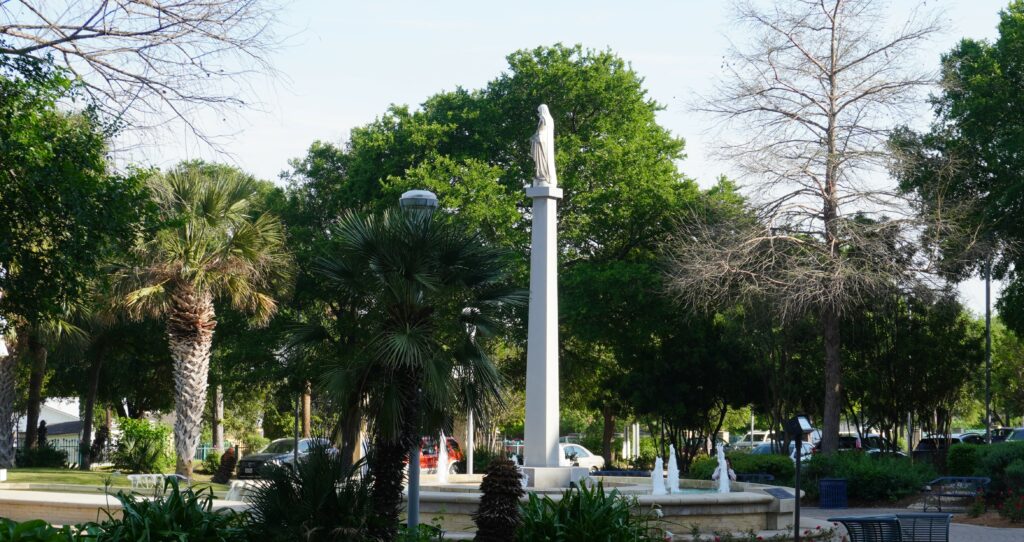
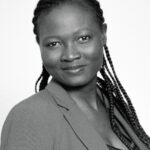

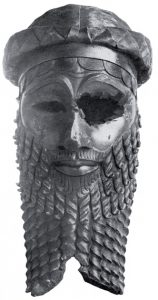
2 comments
Natiebe Nanda
Thank you Andrew Ponce!
Andrew Ponce
Hello Natiebe! Articles such as these are unique in their own fashion. While many people write articles on historical events or people outside of the familiarity of students, this article was done on something that everyone is familiar with at this university. This Article goes through each piece of history that is attached to St. Mary’s. The amount of depth that is within each piece of history mentioned draws the reader and immerses them into the article itself. This is an amazing piece, great work!